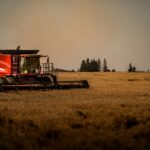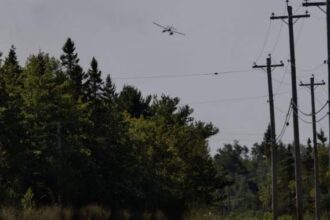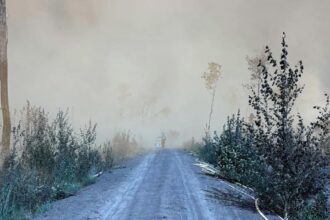In the quiet early morning hours along New Brunswick’s northern coast, a devastating collision between a motorcycle and a moose has claimed the life of a 60-year-old man, marking a somber reminder of the region’s persistent wildlife hazards.
The fatal incident occurred shortly before 5:30 a.m. on Monday along Route 11 near Bertrand, approximately 20 kilometers east of Bathurst. According to the RCMP’s Northeast District, the motorcyclist, a resident of Beresford, sustained critical injuries when his vehicle struck a moose that had wandered onto the highway. Despite emergency responders’ efforts, the man was pronounced dead at the scene.
“These types of collisions represent one of the most dangerous road hazards unique to our region,” said Sgt. Martin Daigle of the New Brunswick RCMP. “The combination of early morning darkness, wildlife movement patterns, and limited visibility created a tragic situation that’s unfortunately not uncommon on our rural highways.”
Statistics from Transport Canada indicate that wildlife-vehicle collisions account for approximately 4-8 percent of all motor vehicle accidents in the country, with larger animals like moose presenting particularly deadly risks due to their height and weight. When struck, a moose’s body typically impacts a vehicle’s passenger compartment rather than the bumper, creating catastrophic consequences particularly for motorcyclists who lack protective barriers.
Wildlife biologists note that early morning and dusk represent peak periods for moose movement, particularly during spring and early summer when the animals are more active. Route 11, which traverses significant stretches of forested areas along New Brunswick’s coastline, has been identified as a high-risk corridor for wildlife crossings.
“This section of Route 11 runs through prime moose habitat,” explained Dr. Ellen Rousseau, wildlife biologist with the New Brunswick Department of Natural Resources. “The animals are attracted to roadside vegetation, particularly after winter when they’re seeking new growth. The timing of this accident aligns with typical moose behavior patterns.”
The New Brunswick Department of Transportation has implemented various measures to reduce wildlife collisions, including warning signs, reflectors, and in some high-incident areas, fencing. However, the province’s extensive road network through wilderness areas makes comprehensive protection challenging.
Local motorcycle enthusiasts expressed condolences while emphasizing the heightened risks riders face. “As motorcyclists in this region, we’re acutely aware of the dangers wildlife presents,” said Jean Boudreau, president of the Northern New Brunswick Motorcycle Association. “This tragedy is a heartbreaking reminder of the vigilance required, especially during dawn and dusk hours.”
The RCMP indicated an investigation into the incident continues, though no foul play is suspected. The victim’s name has not been released pending notification of family members.
For residents of New Brunswick’s northern communities, where wildlife encounters are commonplace, this incident serves as a stark reminder of nature’s unpredictable presence on roadways. According to provincial data, New Brunswick averages approximately 400 moose-vehicle collisions annually, with several resulting in serious injuries or fatalities.
As summer approaches and both wildlife activity and tourist traffic increase along Route 11, authorities urge heightened awareness, reduced speeds during dawn and dusk hours, and particular caution in areas marked with wildlife crossing signs.
In the wake of this tragedy, how might New Brunswick balance its natural wilderness heritage with the safety needs of residents traversing its highways?














